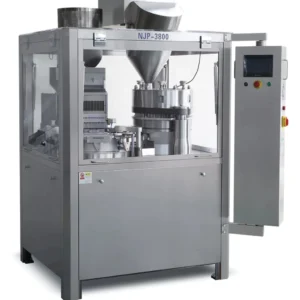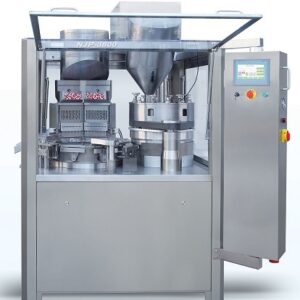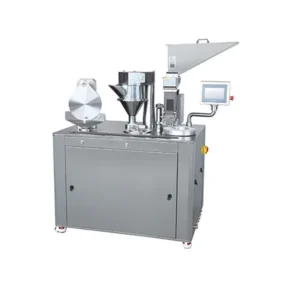Description
| Specification | Description |
|---|---|
| Mixing Capacity | Up to 5 liters |
| Motor Power | 500 watts |
| Speed Range | 100 – 1000 RPM (adjustable) |
| Motion Modes | Multi-directional: forward, backward, and orbital |
| Mixing Mechanism | Dual-action mixing paddles and orbital rotation |
| Material Construction | Stainless steel body and mixing paddles |
| Control Interface | Digital control panel with LCD |
| Timer | Programmable timer with auto-shutoff |
| Safety Features | Overload protection, automatic shutdown in case of malfunction |
| Power Requirements | 120V/60Hz or 220V/50Hz (depending on region) |
| Dimensions (L x W x H) | 30 cm x 25 cm x 40 cm (approx.) |
| Weight | 15 kg (approx.) |
| Certification | CE-certified, compliant with international safety standards |
| Warranty | 1-year limited warranty |
Introductions of Multi-Directional Motions Mixer
The Multi-Directional Motions Mixer (MDMM) is an intricate blending machine that can handle complicated tasks with multiple motions at the same time. Such motions include tumbling, rolling, and cascading which are not only integrated into MDMM but also used as simultaneous mixing operations. This technique guarantees homogeneous mixtures, uniform component distribution, and minimal processing times making MDMM most preferred in precise and efficient combination production.
Types of Multi-Directional Motions Mixers
The following are the various types of Multi-Directional Motions Mixers:
V-Type Mixer: The V-type mixer has a container shaped like a V to enhance the effect of tumbling and cascading in creating an effective mixture. It is ideal for mixing powders, granules, and friable material without causing their excessive wear or destruction.
Double Cone Mixer: Its shape is conical because it employs rotational motions along with convective ones hence giving rise to homogeneous blending of dry powder and granules. What makes it perfect for delicate materials or situations where minimum shear forces are required? This gentle blending process works best with sensitive material contents.
Three-Dimensional Mixer: Also called a Rotary Drum Mixer, this type of MDMM uses rotating barrels to generate complex three-dimensional actions such as tumbling, rolling, and shearing among other relevant motions. It can be successfully employed in mixing powders to pastes; however, it is very effective in combining cohesive or adhesive substances.
Ploughshare Mixer: In its design, this kind looks like ploughshare hence using radial and axial movements to ensure complete homogeneity of powder products such as paste or slurry mixtures. Its high-speed action while mixing leads to rapid homogenization and efficient dispersion of ingredients facilitating higher capacity utilization purposes.
Fluidized Bed Mixer: For instance, these types employ fluidization principles for even gentle distribution of particles within particulate materials while forming mixtures. Likewise, when air or gas is used to suspend particles in a fluidized bed, it creates cell-to-cell contacts resulting in immediate mixing with no possibility of segregation or stratification.
Working Processes of Multi-Directional Motions Mixer
The MDMM functions by applying multiple directional movements simultaneously that have particles within the mixing chamber move and interact. Tumbling, rolling, cascading, shearing, and fluidization are some of these motions; their presence depends on the design and configuration being used. Through these synergies, MDMM effectively combines different materials ranging from fine powders to viscous pastes thereby achieving efficient blending and homogenization.
An MDMM operates as follows
Loading: Loading can be done manually via the top cover or by using an automated feeding system for direct discharge into the mixer.
Initiation of Motions: Depending on the type of the mixer drives such as rotation, oscillation, or vibration are initiated to activate the various motions.
Mixing: As a result of applied motion, materials inside the mixer chamber experience complex movement during operation which includes internal collision between particles leading to interparticle collisions, shear forces, and convective flows that enhance thorough blending and dispersion of constituents.
Discharge: After mixing is over, this mixed composition passes out directly through discharge ports at its bottom outflow or may simply be evacuated from its outlet directly.
Applications of Multi-Directional Motions Mixer
MDMM is applicable in a diverse range of industries due to its versatility and efficiency. Common applications include:
Pharmaceuticals: MDMMs are utilized to blend Active Pharmaceutical Ingredients (APIs), excipients, and other powders into uniform mixes suitable for tablet compression, granulation, and capsule-filling operations.
Food and Beverage: In the food industry, MDMMs are used to prepare bakery products, confectionery items, nutritional supplements, and ready-to-eat meals by mixing dry ingredients, flavorings, and additives.
Chemicals: For chemical manufacturing processes such as polymerization, crystallization, or blending of specialty chemicals which involve powders mixture with dye pigments or catalysts; MDMMs play an important role.
Cosmetics and Personal Care: Consistency of texture, color, and fragrance distribution in creams lotions gels, etc. that are made in cosmetics and personal care product manufacturing is achieved using MDMMs.
Agrochemicals: Uniform formulations for agricultural applications can be produced by mixing fertilizers, herbicides, micronutrients, and pesticides using MDMMs.
Construction Materials: To obtain consistent building materials of a high quality in the construction industry cement concrete mortars as well as additives are mixed using MDMMs.
Metallurgy and Mining: These include ore beneficiation smelting alloy production among others where ores minerals/deposits fluxes/additives must be blended before proceeding with metallurgical/mining processes – melting alloys from them is only one example to this point!
Functions Of Multi-Directional Motions Mixer
The Multi-Directional Motions Mixer performs several key functions essential for efficient mixing and blending processes:
Homogenization: inducing multiple directional motions ensures complete dispersion of the components leading to homogeneous blends having a constant composition/properties.
Particle Size Reduction: Apart from mere mixing; particle size reduction may also take place when materials undergo shear forces impact attrition resulting in breaking down agglomerates hence refining particle size distribution.
Deagglomeration: The equipment breaks down clumps or agglomerates that may have formed during storage, transportation, or processing, thereby leading to improvement in flowability and handling properties of powders/granules.
Coating and Encapsulation: In some applications where one wants to achieve specific functionalities such as taste masking, control release, or protection from environmental factors by coating particles or encapsulating active ingredients within matrix materials; MDMMs can be used.
Temperature Control: these might entail jacketed walls, internal heating/cooling systems, etc. which are aimed at ensuring that the appropriate temperature is maintained throughout the mixing process especially when dealing with heat-sensitive substances.
Hygiene And Cleanability: As a result, most of the machines are designed in compliance with stringent hygienic standards for easy cleaning and sterilization purposes thus making them suitable for use in pharmaceutical, food, and cosmetic industries that put product purity and safety first.
Automation And Integration: Advances in automation and process control technologies have made it possible to incorporate MDMMs into production lines alongside other equipment such as feeders, conveyors packaging machines hence streamlining manufacturing operations towards enhanced productivity.
Future Trends in Multi-Directional Motions Mixer Technology
As industries continue to evolve and demand higher levels of efficiency, flexibility, and product quality, the Multi-Directional Motions Mixer technology is expected to undergo several advancements and innovations. Some future trends in MDMM technology include:
Advanced Control Systems: To precisely monitor temperature pressure speed time etc through PLCs (Programmable Logic Controllers) and HMI (Human-Machine Interface) among others there will be a need for additional control mechanisms on future MDMMs.
The integration into Industry 4.0, MDMMs are increasingly being integrated into Industry 4.0 frameworks that exploit the IoT (Internet of Things), AI (Artificial Intelligence), and big data analytics to accomplish predictive maintenance, remote monitoring, and optimization of mixing processes towards improved efficiency and reliability.
Customization and Flexibility: The focus of manufacturers will be on modularizing and customizing MDMMs which can accommodate different mixing requirements, batch sizes, formulations, etc., for greater flexibility and adaptability to changing production needs.
Energy Efficiency and Sustainability: Future MDMMs will prioritize energy efficiency and sustainability by integrating energy-saving technologies such as regenerative braking, variable-frequency drives, and renewable energy sources among others to minimize energy consumption and environmental impacts.
Hygienic Design and Sanitary Standards: Future MDMMs will incorporate enhanced hygienic design principles such as smooth surfaces, crevice-free construction, and clean-in-place (CIP) systems into their products in response to concerns about product safety and hygiene to meet strict sanitary standards/regulations.
Smart Sensing and Monitoring: Using smart sensors and monitoring devices in MDMMs that enable real-time tracking of key parameters including mixing uniformity, particle size distribution, moisture content, etc., would support proactive quality control activities/process optimization.
Application-specific Solutions: Manufacturers must develop specialized MDMMs for different industries like the Pharmaceutical industry; Food industry; Cosmetic industry; and specialty chemicals-SpeciChemMDMM with optimized mixing algorithms, geometries/construct materials respectively tailored to the needs of each sector.among other things
Cost-effectiveness: Even though they are sophisticated, MDMMs provide low-cost solutions for blending and mixing in the processes due to their efficiency, reliability, and durability which gives a good return on investment (ROI).
Commonly Asked Questions
What is a Multi-Directional Motions Mixer (MDMM)?
The Multi-Directional Motions Mixer is a modern blender that employs several simultaneous movements like falling, rolling cascading, etc., to mix different materials well enough.
How does a Multi-Directional Motions Mixer work?
MDMMs have complex movements within the mixer chamber brought about by the various motions that are generated by its drive mechanism. These motions lead to efficient blending and homogenization of materials through interparticle collisions, shear forces, and convective flows.
What are the different types of Multi-Directional Motions Mixers?
V-Type Mixers, Double Cone Mixers, Three-Dimensional Mixers, Ploughshare Mixers, and Fluidized Bed Mixers are some examples of commonly used MDMMs that match specific applications as well as production scales.
What are the main applications of Multi-Directional Motions Mixers?
This equipment finds application in various industry sectors including pharmaceuticals, food & beverages, chemicals; cosmetics; agrochemicals; construction materials; metallurgy; and mining where powders; granules; pastes, and slurries need to be blended.
What are the advantages of using Multi-Directional motion mixers?
Enhanced mixing efficiency, improved product quality reduced material waste versatility delicate handling space-saving design maintenance easiness dimensional adaptability regulatory compliance low operational cost among others are benefits associated with MDMMs.
How do Multi-Directional Motions Mixers differ from traditional mixers?
On the other hand unlike traditional mixers that use single principles such as rotational or axial motion only to blend their contents MDMMs utilize multiple directions thereby becoming more efficient and versatile than others.
Can Multi-Directional motion mixers handle heat-sensitive materials?
Yes, many MDMMs are equipped with temperature control mechanisms such as jacketed walls or internal heating/cooling systems to keep the desired temperature during mixing processes for handling heat-sensitive materials.
Are Multi-Directional Motions Mixers suitable for cleanroom environments?
In this regard, the design of MDMMs is such that they can be easily cleaned and sterilized since they are made to meet strict hygiene standards hence making them useful in clean room environments where product purity and safety are given priority.
Can Multi-Directional Motions Mixers be integrated into automated production lines?
With developments in automation as well as process control technologies these devices can fit into automated production lines and work alongside other equipment like feeders, conveyors, and packaging machines among other things to facilitate manufacturing processes.
What are the future trends in Multi-Directional motion mixer technology?
Future trends of this kind include; advanced control systems, integration with Industry 4.0 frameworks, customization and flexibility, energy efficiency and sustainability, hygienic Design & Sanitary Standards smart sensing & monitoring based on applications sectors that cater to specific industries & applications.





Reviews
There are no reviews yet.